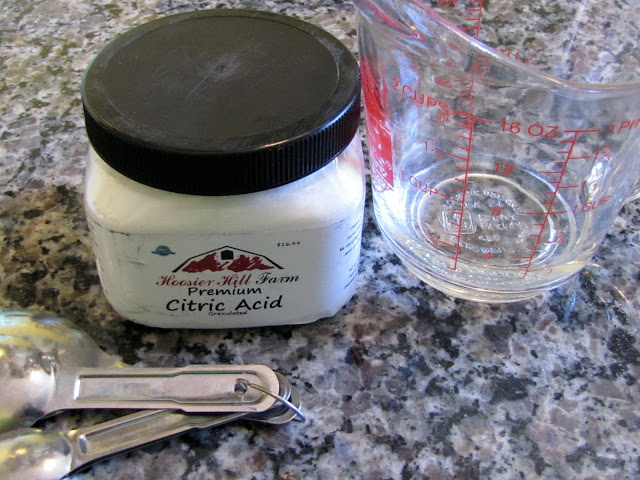I love this book by Barbara Kingsolver. In it, she tells how she and her family lived for a year on things they grew and raised on their farm. Everyone needs to read it. The book contains many of the recipes they used, including one for mozzarella cheese. I had never made cheese, and wanted to give it a try.
You need one gallon of pasteurized whole milk in a stainless steel pot and a cooking thermometer. Gently heat the milk to 55 degrees.
Mix 1 1/2 level teaspoons citric acid dissolved in 1/4 cup cool unchlorinated water. Add to the milk when it reaches 55 degrees.
Dissolve 1/4 teaspoon liquid rennet in 1/4 cup cool unchlorinated water. Add to milk when it has reached 88 degrees. Stir gently. The milk curdles very quickly.
When milk reaches just over 100 degrees, remove from heat. The curds should be pulling away from the sides of the pot.
Using a slotted utensil, remove the curds from the liquid, or whey.
You will have lots of whey, which is very high in protein. Commercially, it is used to make protein powder and other products, but I don't know how to do that. After it was cool, I poured it on my pots of herbs.
Press curds gently to remove all the liquid. Heat in the microwave for a minute, and squeeze again. You may need to do this several times to remove all the liquid.
When it looks like this, salt to taste (I used about a teaspoon full). Knead and pull it like taffy until it is smooth and elastic.
The end result was these two 8-ounce balls of mozzarella. It was very good, although it had a different texture than what we get at the store.
I was surprised at how easy it was to make. I think most people could make it who wanted cheese that is really fresh and free of preservatives. You won't save a lot of money unless you have a source of milk other than the supermarket.











Comments
Post a Comment